
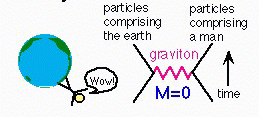
The well-known gravity that binds us to the earth.

Gravity is proportional to mass, while mass is equivalent to energy:

Gravity thus acts on all kinds of (even massless) particles. The gravitational force on elementary particles is, however, extremely weak at energies that are accessible at present-day accelerators. Nevertheless the gravitational force becomes important at ultra-high energies as once existed at the beginning of the universe.
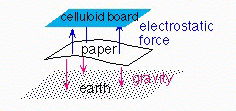
The electrostatic force of a celluloid board lifting a sheet of paper is often stronger than the gravitational force from the whole earth pulling it down.
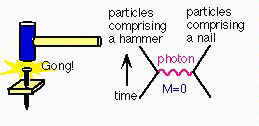
Not to mention electrostatic or magnetostatic forces, all the forces, except for gravity, we experience in everyday life are electromagnetic.
In particular, the force that binds electrons to nuclei to build atoms and the force that holds atoms together to form molecules are the electromagnetic force.

Electromagnetic force is proportional to electric charge. Charged particles, such as electrons, are juggling invisible photons (virtual photons). In other words, they wear a dress of virtual photons.
When an electron suddenly changes its direction, part of the photons are shaken off as synchrotron light.
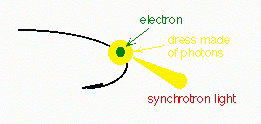
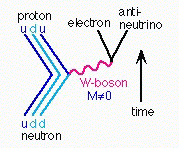
The force that can transform particle species as in beta decays of nuclei.
Though it plays essentially no role in everyday life, the force becomes very important in the microscopic world of fundamental particles.

The force particles mediating the weak interaction, W and Z, have large masses. Because of this, the range of the weak force is extremely short and thus its apparent strength is much weaker than the electromagnetic force, although their coupling constants which specify their true strengths are similar. This is the reason why we do not experience the weak force in everyday life.
The W and Z bosons are, like the photon, gauge bosons, which were originally massless. Their masses are believed to be coming from the interaction with the Higgs field filling up the vacuum as explained later. The electromagnetic and the weak forces are now described in a unified manner as the electroweak forces:

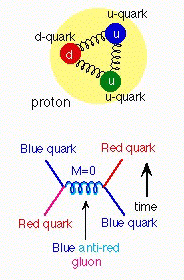
The force that binds quarks to make up protons and neutrons and then binds them together to form nuclei.

The strong force is proportional to so-called color charge. Each quark comes in three colors, red, blue, and green (of course, they are not true colors). Corresponding to 8 color combinations excluding that resulting in white:

there are 8 gluons, all of which are massless. In spite of this, the
strong force is of short-range and unobservable in everyday life, because gluons have color charges and juggle themselves making the strong force stronger at longer distance.
As a result, only white states can be stable at a distance longer than the size of nucleons (protons and neutrons). This phenomenon is called color confinement.

To next page, To previous page, To contents